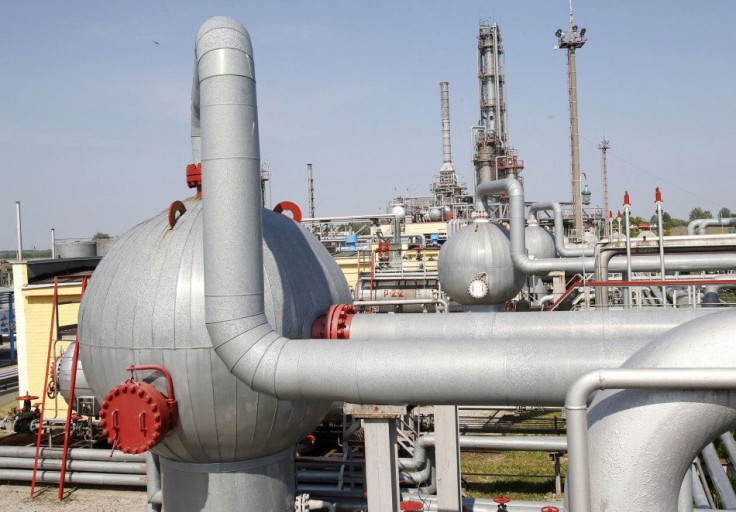Will Natural Gas Become U.S.'s Primary Energy Source by 2030?
Analysis

Could domestic natural gas become the "game-changer" energy source for the United State in the 21st century?
It's possible. Even Billionaire Oilman T. Boone Pickens, who knows a thing or two about the energy business, is bullish on natural gas. Maybe you should be too, as an investor or a consumer.
A "perfect storm" of new drilling/access techniques, producers' reluctance to cut production, and a pricing anomaly has created a new opportunity for natural gas to emerge as a dominant energy source in the United States in the decades ahead.
Natural Gas: Starting to Get Respect
That's not hype. Moreover, for a long time natural gas was "the Rodney Dangerfield of U.S. energy forms" -- it got no respect.
First, there's natural gas' low price. Natural gas is currently hovering around $4 per million BTUs (MMBtu) on rising supplies and relatively low demand from industry. What's more, the fact that natural gas did not surge above $5 per MMBtu this summer -- despite high production by gas-fired electric power generation plants -- is a sign of markets that are bursting with suppy. Traders say prices could fall to $3.25-3.50 per MMBtus before demand picks up, assuming the U.S. economy continues to grow.
Second, long-term, natural gas will likely at least remain competitive with oil, and probably remain cheaper on an energy delivered per dollar basis. The primary reason? Large storage capacity in the United States, and the to-date unwillingness of natural gas producers to cutback production, despite the oversupply. New technology, including a process called hydraulic fracturing, enables the tapping of natural gas sources in the previously cost-prohibitive U.S. regions of Appalachia, the Mid-Continent, the Gulf Coast, and in the Rocky Mountains.
Hydraulic fracturing, or "fracking" has come under fire for groundwater pollution, a legitimate concern, but investors should keep in mind that many sites accessible by innovative technology will not involve such risks.
What's more, estimated U.S. natural gas reserves have increased 23 percent, mostly on the ability to access those new sources, with estimated reserves totaling 1,898 trillion cubic feet as of the end of 2010, up from 1,532 trillion cubic feet in 2006, according to the Potential Gas Committee.
Third, oil and natural gas, which compete with eachother but which do not have identical customers or uses, are currently orbiting in distant solar systems. Oil, currently trading about $86 per barrel, is now about 21.5 times the price of natural gas, compared to a historical average of about 8.4 times natural gas over the past decade.
What's more, oil, for a variety of reasons, shows little sign of trending lower, although it has pulled back recently on concerns about government bond woes in Europe and the slowdown in U.S. gdp growth.
Whether its oil-as-an-asset-play, the threat of inflation, a weakening dollar, OPEC production cuts, or the prospect of rising demand in emerging markets, oil has (so far) found a way to remain in the stratosphere, despite high inventories and high U.S. unemployment (which reduces the number of U.S. drivers on the road).
Further, there's always some oil sector analyst who argues oil is overpriced and predicts a price collapse. But it doesn't happen.
Will Natural Gas Make Energy In-Roads This Decade?
That aforementioned price disparity creates a new opportunity for natural gas to displace both oil and coal. Regarding transportation, more vehicles, especially fleets of buses, vans, and trucks will likely shift toward natural gas-powered engines.
Regarding utility-based electric power generation, coal is still much cheaper than natural gas for generating electricity, but new Congressional legislation to penalize carbon emissions will probably decrease that edge: coal is inherently dirtier than natural gas. And in an increasingly green world, that does not bode well for coal.
Still, after price, perhaps natural gas' most important selling point is its location: it's a domestic energy source. All one has to do is experience an oil shock, read about the civil war in oil exporter Libya, or sample some of the $4 per gallon (and higher) gasoline prices around the nation to understand the importance of a domestic energy source.
Energy Analysis: Natural gas presently accounts for about 25 percent of the nation's energy production, and 22 percent of electricity production. Natural gas is not without environmental concerns: it has a lower impact on climate change, not no impact, and some environmental groups are concerned that hydraulic fracturing will pollute drinking water sources.
That said, the view from here argues that advantages of natural gas -- energy abundance, energy independence, enhanced foreign policy flexibility, ample reserves, wealth retained in the United States, more domestic jobs, and a lower impact on climate change -- push the needle in favor of a much bigger role for natural gas for the nation's energy needs, in the decades ahead.
© Copyright IBTimes 2024. All rights reserved.





















